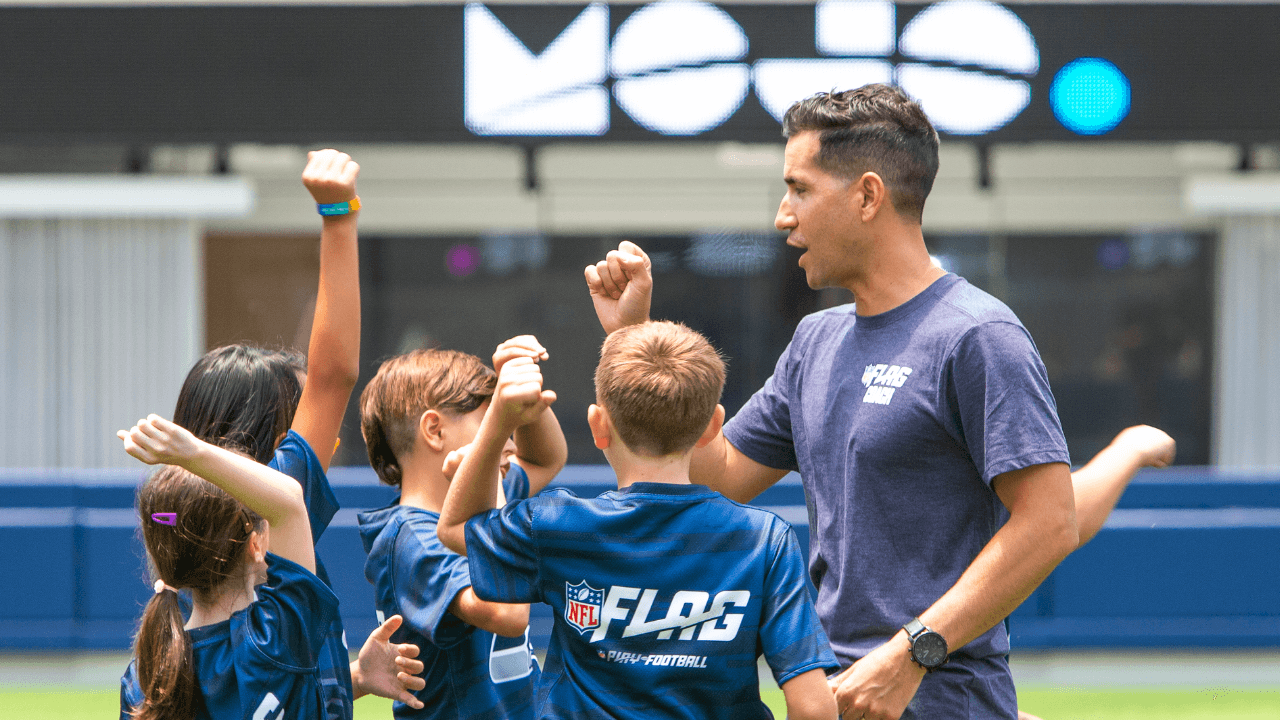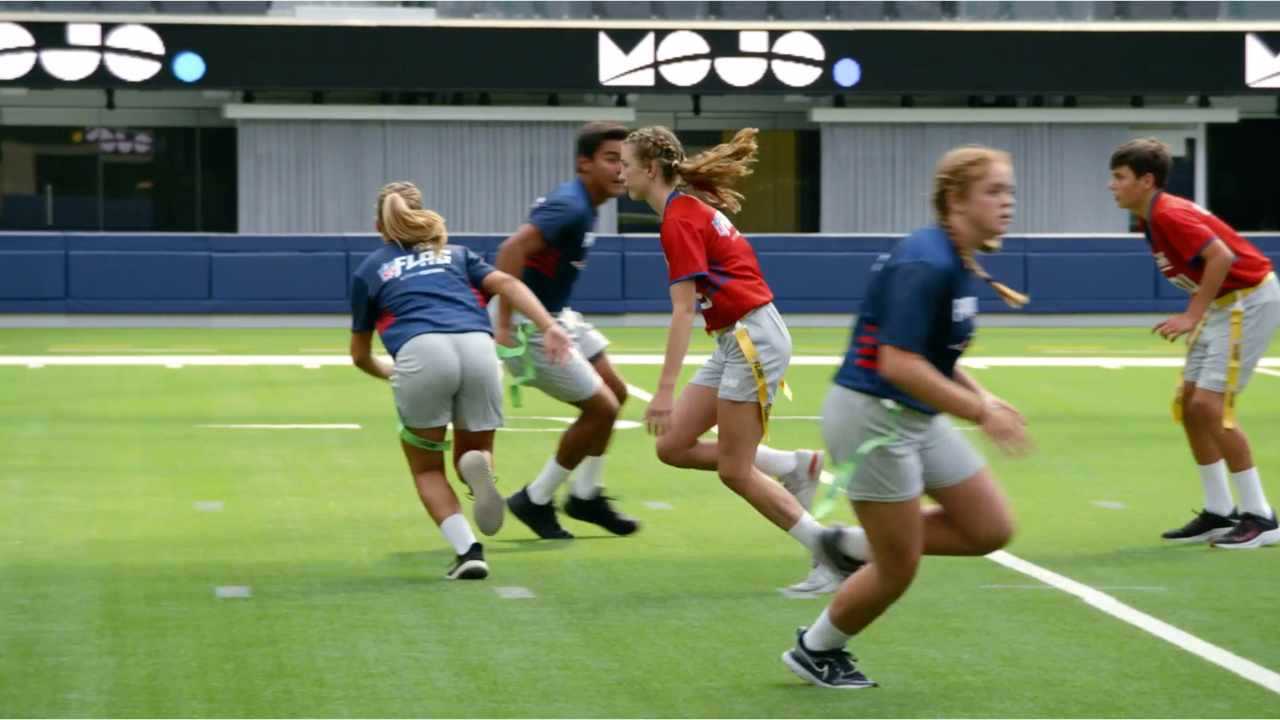The Art and Science of Game-Time Substitutions
Three flag football coaches share how they make sure that everyone plays
Sue Pierce
| 4 min read

If you’re coaching a team of 10 for 5v5 flag football, game-time substitutions are a piece of cake. But what if you have seven or eight players? Very quickly, substitutions become hectic, last-minute and, sometimes, unfair.
Here are some tips and strategies from three seasoned flag football coaches to help you keep your players rotating smoothly on game day.
One for one
Art Moreno has coached flag football for the past three years and currently coaches five teams with Blue Chip Youth Sports, in Southern California. His strategy is simple, but effective: Switch out one player with every play.
“Just keep the rotation going – one in, one out – no matter if you’re on offense or defense,” says Moreno. “By the time the rotation gets back to the first player, they should get at least four plays.”
Brad Salvatore, in his third season of coaching Wilton Flag Football in Connecticut, also subs in one player with each play, but only for defense. “For offense, I stick with a crew and then substitute if we get a first down,” he says. Both methods keep players moving on and off the field quickly. “I don’t like having any kids stand on the sidelines too long,” says Salvatore.
Group rotation
Damon Blechen, a coach with Central Marin Next Level Flag Football in Northern California, actually prefers having seven or eight players on his team, instead of 10. He rotates groups of three players while keeping two on the field the entire quarter. “This allows me to rotate players, but I get to keep the strongest players out there a little bit more,” says Blechen.
A written plan
Whether you should have a written substitution plan at the game is a matter of personal preference. “I think if you try to stick hard and fast to the script, you’re going to get in trouble,” says Moreno. “The game flow is so different and the substitutions just have to happen no matter what’s going on.” If you’re working with the one-to-one rotation, you can probably skip it.
Having a written sub plan can help when you rotate groups of two or more. Blechen likes to have a plan sketched out to make sure all his players get enough time. “I think having defined benchmarks for when you put players in helps manage the substitutions,” he says. “Otherwise, you get wrapped up in the pace of the game and calling plays. Substitutions become an afterthought.”
Enlist an assistant
All coaches agree on one thing — get help. Having an assistant coach who can manage substitutions is a real game changer.
“That’s absolutely the best because you’re so focused on the five players that are on the field,” says Moreno. Whether an assistant is following a written plan or just rotating players in one at a time, their ability to focus on the subs will ensure smooth execution – and fairness. “They can let you know if a player hasn’t gotten enough time,” says Blechen.
Who goes where?
Make sure your game-time substitutions make sense for your players. Game day is not the time to try someone in a new spot. “We try to teach them during practice where they might end up playing, and we try to keep them there. One of the worst things for me as a player would be to show up unprepared,” says Moreno.
Salvatore’s approach is similar. “At practice, we give everyone a chance to play every position. But in the games, I put them where they’re going to succeed.” He recommends asking the players whether they like offense or defense better. Often, kids have a preference and that just might make substitutions easier for you.
Subs FTW!
Coaches have different ways of ensuring that players are getting equal playing time. Some coaches plan it so every kid plays 50% of snaps. “I try to make sure each player has a carry every single game,” says Salvatore. Blechen likes to use plays that give more inexperienced players a chance to touch the ball, either running or receiving. “Hopefully everyone has a chance to have some feel-good moments,” he says.
No matter what, substitutions are key to developing players – and keeping the team happy. “I tell the team, I tell the parents – everybody has to play,” says Moreno. “The substitutions are a bit bigger than the game.”
Want more Game Day advice? Be sure to check out:




